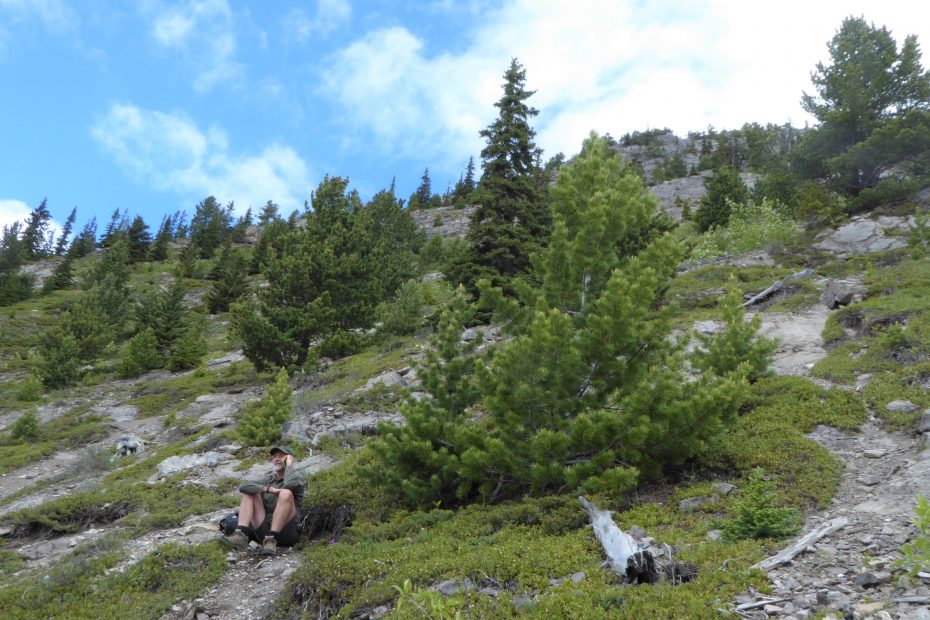Whitebark and limber pine in the Canadian Rockies
Whitebark pine (WBP; Pinus albicaulis) and limber pine (LP; P. flexilis) are often called five-needle pines because their needles grow in bundles of five, as opposed to our more common lodgepole pine (P. contorta), which has bundles of two needles. Both species have fascinating life histories and play large roles in mountain ecosystems: they retain snowpack at high elevations, serve as nurse trees at treeline and other exposed sites, and are an important food source for many animals.
First, how can you tell them apart?
The best way to differentiate the two species is to look at the pollen and/or seed cones (Smith 2020):
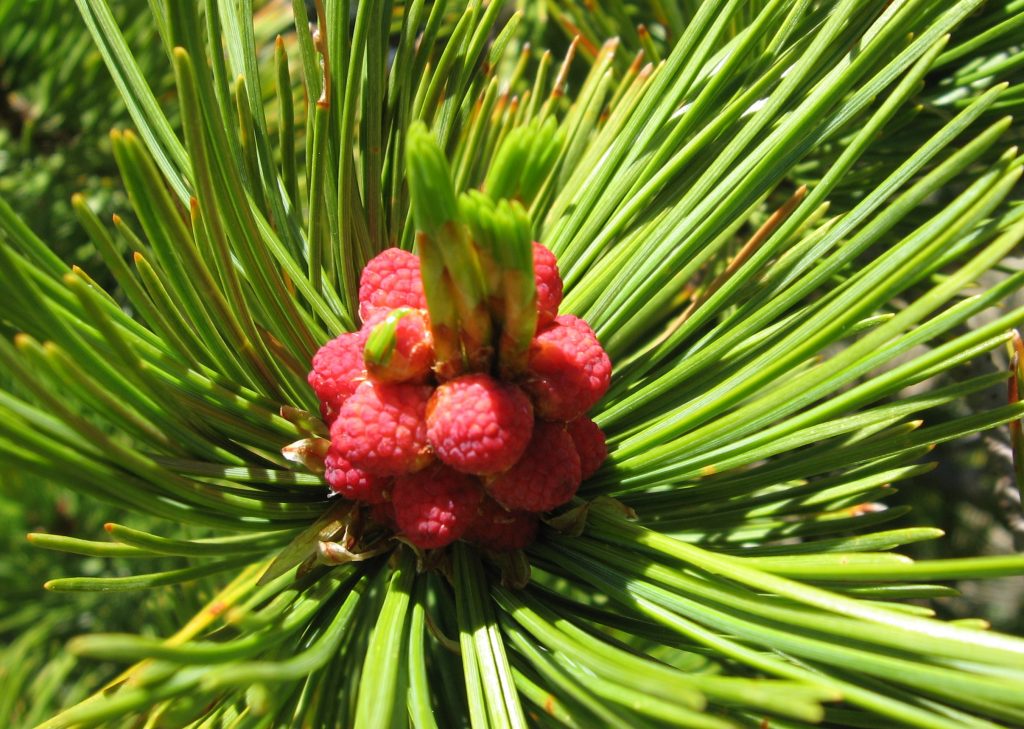

- Pollen cones are present in the spring and early summer: WBP pollen cones are scarlet in colour, while LP pollen cones are yellow.
- As both age they turn brownish and are harder to tell apart.
- Seed cones (what we normally think of as pine cones) are found at the tips of the branches, near the top of WBP trees and throughout the canopy in LP, even on lower branches.
- WBP seed cones are purplish-black in colour and ovoid in shape, 4-8 cm long, while LP seed cones are green in their first year and brown as they mature, more cylindrical, and almost twice the length of WBP cones, 7-15 cm long.


- WBP cones remain closed on the tree when mature, except when they are broken apart by animals, while LP cones open on the tree when mature, shedding their seeds onto the ground, and then falling off the tree. So, if there are no cones on the tree, look on the ground: there are usually open, intact cones under a LP, but only fragments of broken cones under a WBP (any recognizable cones usually show signs of animal predation).
Range and habitat
WBP grows in high-elevation forests in the mountains of western North America, predominantly in the Rocky Mountain ranges from eastern BC south to western Wyoming, but also from the Sierra Nevada in central California to the Coast Mountains north of Smithers, BC..
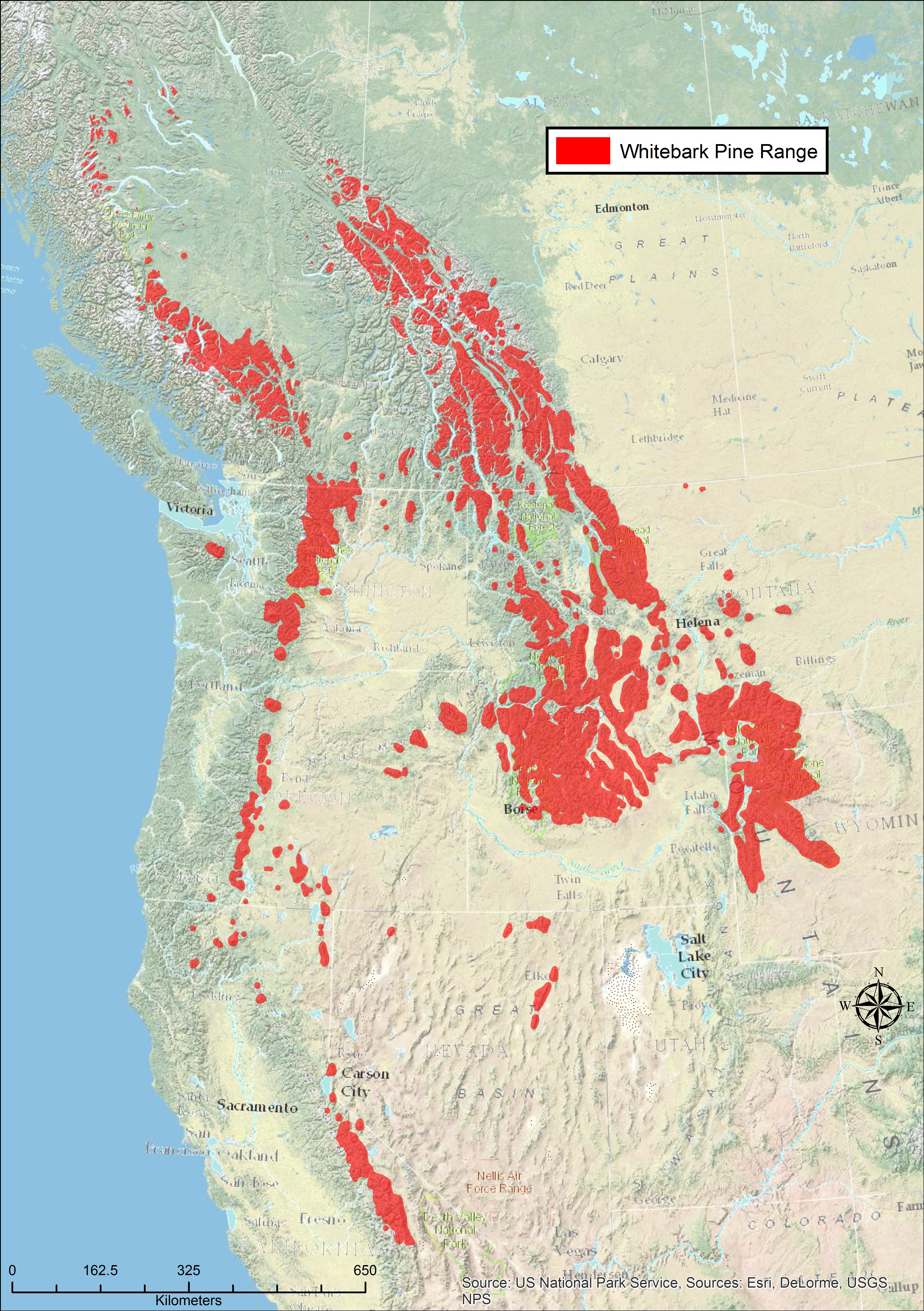
Slightly over half (56%) of the entire range of WBP is found in Canada, the majority of this in BC. WBP grows at or close to treeline, generally above 1600 m, although as low as 1000 m in northcentral BC. In the Rocky Mountains WBP generally occurs above 2000 m in mixed species stands which often include Engelmann spruce (Picea engelmannii) and subalpine fir (Abies lasiocarpa).

LP typically occurs at lower elevations in the lower portions of mountains and foothills, from southern California across the Great Basin to northern Arizona and New Mexico, north to southeastern BC and southwestern AB.
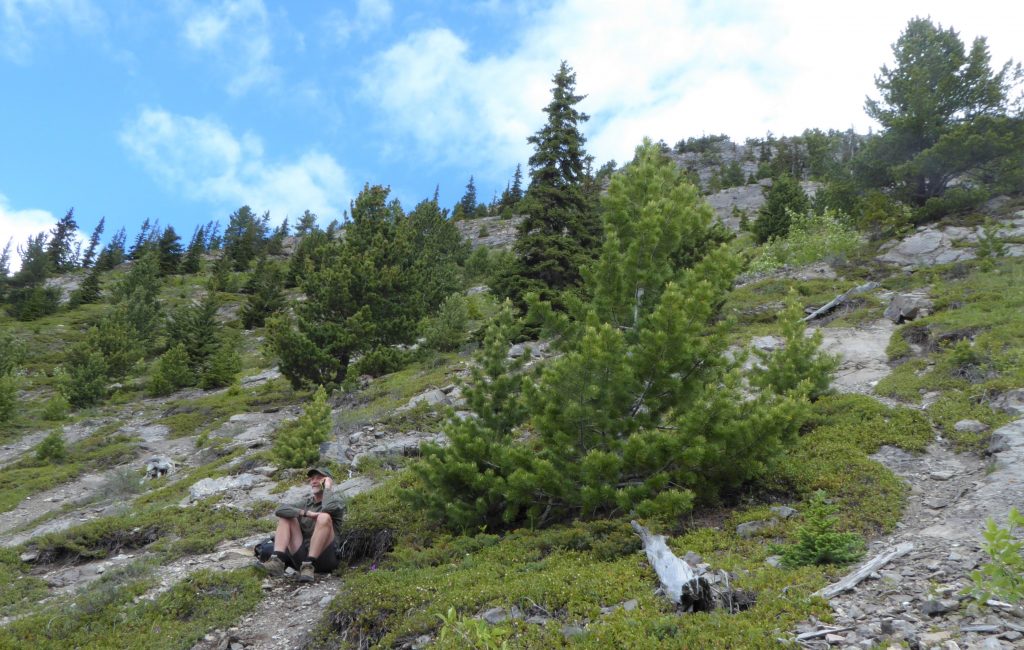
Approximately 10% of the entire range of LP is found in Canada, the majority of this in AB, with the northernmost extent near the Kootenay Plains, east of Saskatchewan Crossing. LP grows in warm, dry habitat, generally from about 850 m to 1900 m, but as high as 2000 m, and thus overlaps in some places with WBP. It typically grows on cliffs, rocky ridges and outcrops, facing south or west.
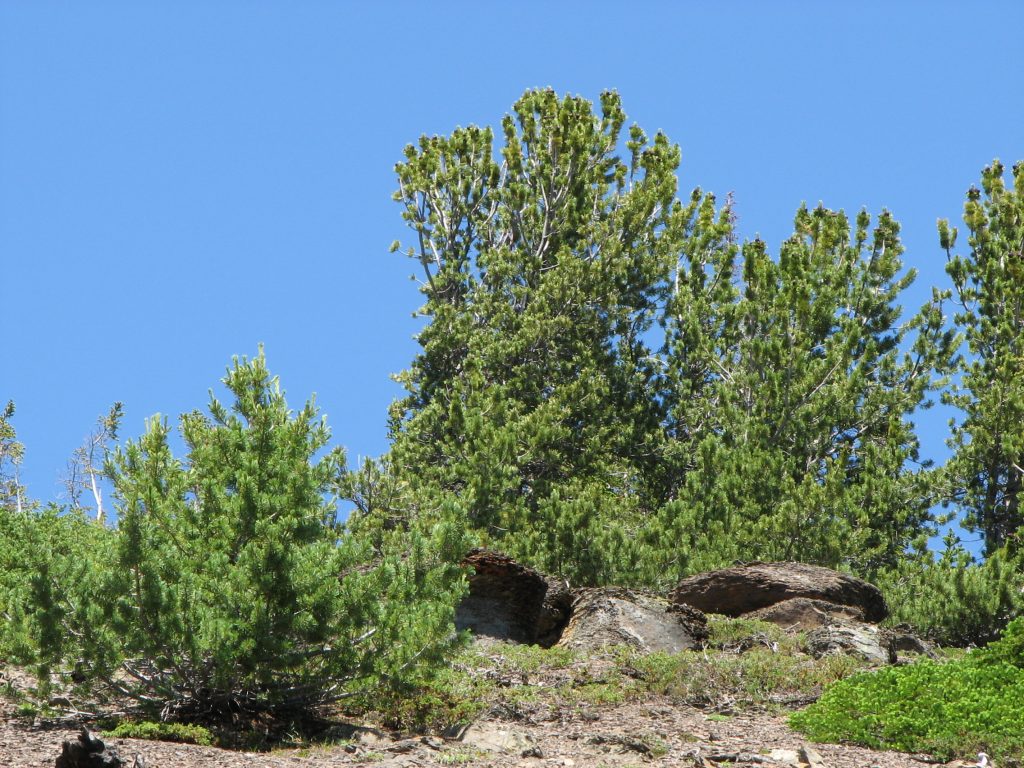
At lower treeline, LP can co-occur with lodgepole pine and Douglas-fir (Pseudostuga menziesii), while at higher elevations it may form stands with WBP.
Both species are shade-intolerant and are often out-competed by faster-growing species such as spruce, fir and lodgepole pine. Both are early colonizers of fire-disturbed sites because Clark’s nutcrackers (Nucifraga columbiana) prefer to cache seeds in open areas (read more on this interaction below).
Biology
Both species are slow growing, but long-lived, often attaining ages of over 500 years, with some individuals reaching more than 1000 years of age. Cones are generally not produced until 40-60 years of age, with sizable cone crops often not happening until 60-80 years of age. Both are considered “masting” species, in which the majority of trees in a population produce cones at the same time, with many intervening years with little cone production (from 3-5 years with much variability depending on location and other factors). Masting may be a way to overwhelm seed predators or it may take many years to replace the nutrient reserves required to produce a lot of cones.

WBP and LP seeds are large and nutritious, similar to the pine nuts you buy in the store (which come from commercial harvests of the Korean pine, Pinus koraiensis). More than 110 species of wildlife have been recorded eating seeds from these two species, or utilising the trees in other ways. WBP cones do not open on the tree to release seeds, but depend on Clark’s nutcrackers to break open the cones, while LP cones open on the tree and seeds are easily obtained by many species, or they fall to the ground.
Nutcrackers extract seeds from both species, storing them in a pouch under the tongue until the pouch is full (up to 125 seeds), then fly off to bury caches of 1-15 seeds in multiple locations, from mere metres away up to 22 kms from the seed tree.
While the birds have a phenomenal memory for re-locating their seed caches, they do not find all of them, and some of these “forgotten” seeds will germinate and start to grow new trees (Lanner 1996).

Red squirrels (Tamiasciurus hudsonicus) are a major seed predator, storing seeds in their underground middens. Even if they do not eat all of the stored seeds, the seeds are usually buried too deeply to germinate. In many areas, grizzly bears (Ursus arctos) have learned to raid these middens to obtain the nutritious seeds (Hamer and Pengelly 2015), even digging down through snow to do so.
While black bears (Ursus americanus) also will raid middens, they often climb the trees to obtain the seeds directly from the cones.
Threats to whitebark and limber pine
Both WBP and LP are threatened throughout their range due to four human-influenced threats: white pine blister rust (WPBR; Cronartium ribicola), mountain pine beetle (MPB; Dendroctonus ponderosae), fire exclusion (prevention and suppression), and climate change.
WPBR is a fungus that was introduced from Europe to western North America around 1910 and has since inflected all five-needled pines on the continent. WPBR has a complex life cycle, requiring an alternate plant host, primarily currant or gooseberry (Ribes) shrubs, but also herbaceous plants such as paintbrush or lousewort. The fungal spores infect the needles first, then grow down the branch into the stem of the tree, erupting from the bark to form an orange canker.
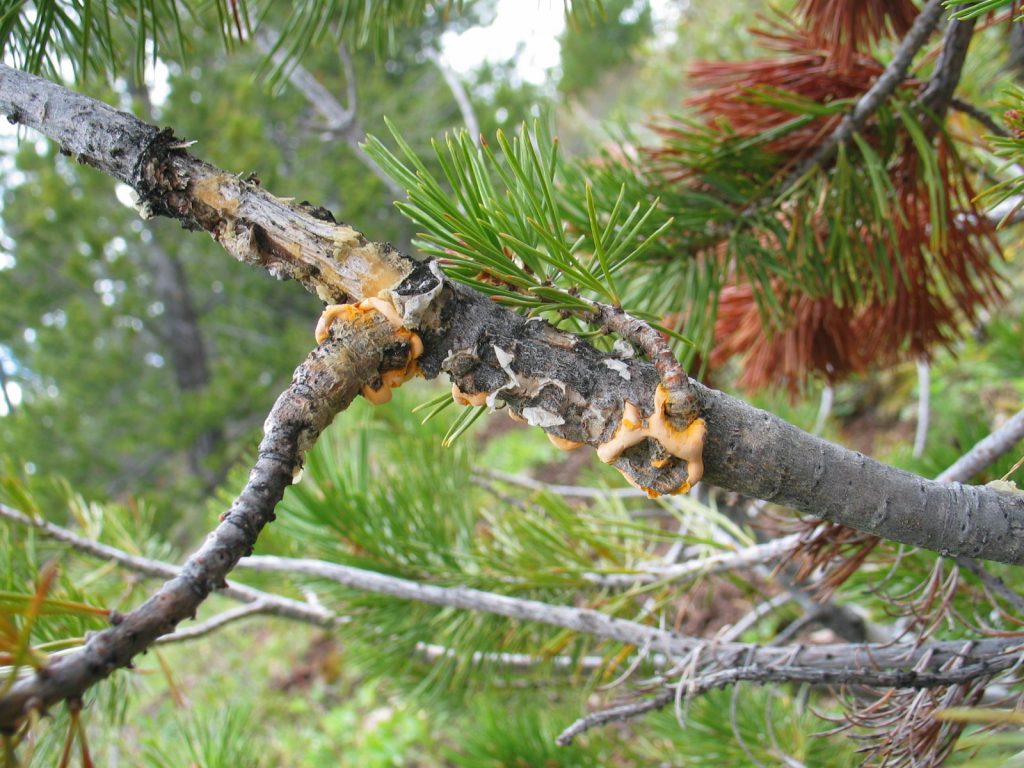
Once the rust circles the stem, it cuts off nutrient flow and the top of the tree dies. The cankers also attract rodents, which chew the canker for the sugars produced, thus girdling the branch or stem. Once the top of the tree has died, cones are no longer produced and the tree is functionally dead.
MPB is a native insect that has co-existed with North American pines for thousands of years, but has recently reached epidemic levels in many areas. MPB lay their eggs beneath the bark and the larvae eat the inner bark (phloem), again interrupting nutrient flow which causes tree death.
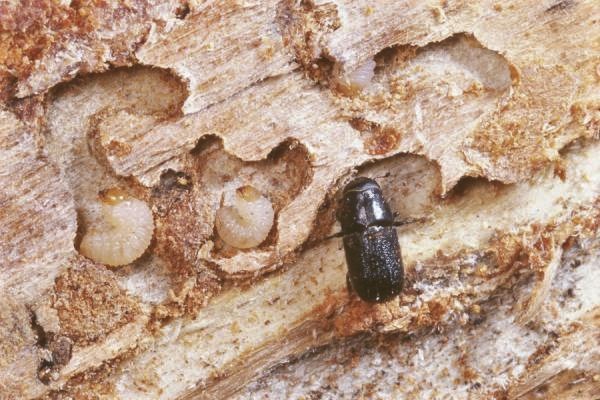
Trees infected with WPBR may also be more susceptible to attack by MPB. With climate warming, there are fewer cold winters to kill off MPB, and the MPB life cycle is now often completed in one year instead of the normal two years, becoming become more prevalent and deadly at the higher elevations where WBP grows.
Fire is the primary disturbance that facilitates regeneration of WBP by reducing shade-tolerant species such as spruce and fir, and creating openings where nutcrackers can cache seeds. Denser stands of trees are more susceptible to high-intensity fires, which can kill seed-producing WBP and LP trees. These conditions are exacerbated by climate warming and change in snowpack. Fire disturbance is less critical for LP regeneration.
Climate change also impacts WBP and LP through drought stress because of higher summer (and winter) temperatures and reduced precipitation year-round. As growing conditions become less suitable, WBP in particular may run out of habitat because it is already growing at the upper limit of soil and nutrient conditions, and cannot move higher up the mountains. At lower elevations, WBP and LP will face greater competition from other species.
Research, monitoring and restoration in the mountain national parks
Starting in the early 2000s Parks Canada took the lead in monitoring the populations of WBP and LP in the Rocky Mountains. The effect of the primary mortality agent, WPBR, is highly variable across the region but is present throughout. Mortality and infection levels for both species are highest in the Waterton Lakes National Park area and lowest in Banff National Park, and have increased significantly since surveys started in 2003. Average infection and mortality levels during the first 13 years of monitoring increased by 3%/year for WBP (Smith et al. 2013a) and closer to 1.5%/year for LP (Smith et al. 2013b). Since then the number of monitoring plots have been expanded to include many more in Alberta provincial parks and other areas (Shepherd et al. 2018).
A number of research projects have been completed and others are underway:
- using remote sensing techniques to map WBP (McDermid & Smith 2008),
- inoculating WBP roots with beneficial ectomycorrhizal fungi to assess impacts on health and survival (Lonergan et al, 2014, Cripps et al, 2018)
- determining the abundance and functional role of WBP at treeline (Tomback et al. 2014), and
- monitoring WBP seeds as food source for bears in Banff National Park (Hamer & Pengelly 2015).
The findings from research and monitoring spurred a flurry of activities on restoring both WBP and LP, which are ongoing:
- prescribed burns in WBP habitat have been used to kill and reduce the spread of competing species,
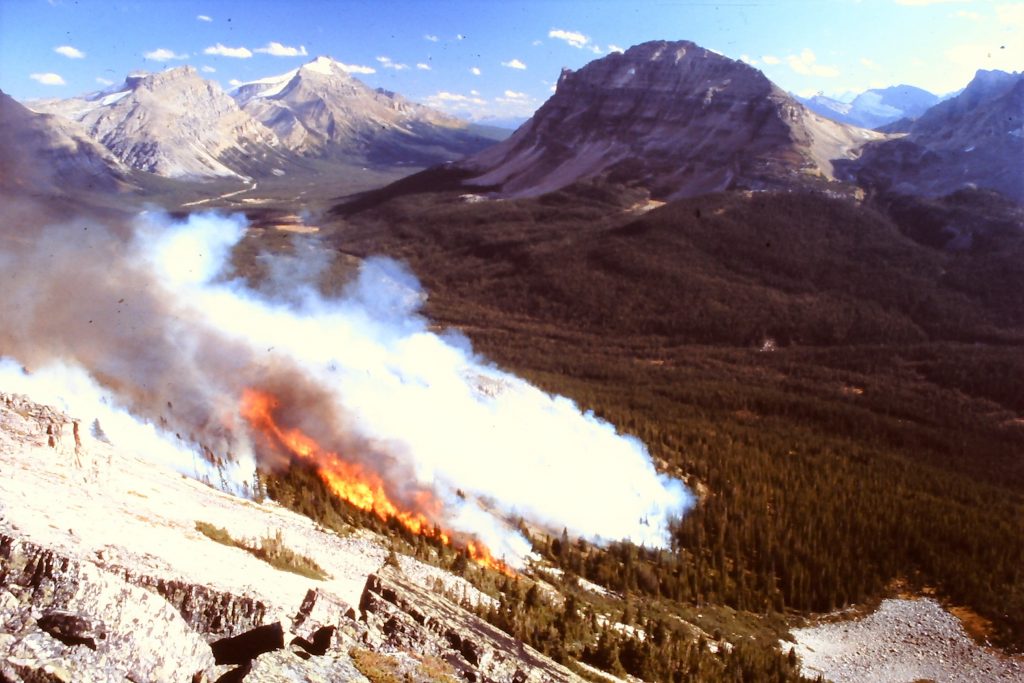
- potential WBP and LP plus trees (those that appear healthy/rust-resistant in areas where infection and mortality from WPBR is high) have been identified,
- plus trees are protected from MPB by attaching chemical packets that either give off signals that the tree is already occupied by beetles or send out false signals that the tree is deciduous not coniferous,

- cones on plus trees are covered with wire cages in June to protect them from predation by Clark’s nutcrackers and rodents, then collected in late September and October,

- cones are sent to facilities in the USA and in Alberta where the seeds are extracted, and undergo testing for genetic resistance to WPBR, which can take 5-7 years to conduct,

- seeds from parent trees that have better WPBR resistance may then be grown for restoration,

- at two years of age, seedlings are planted in areas with suitable habitat, such as recently burned sites, and
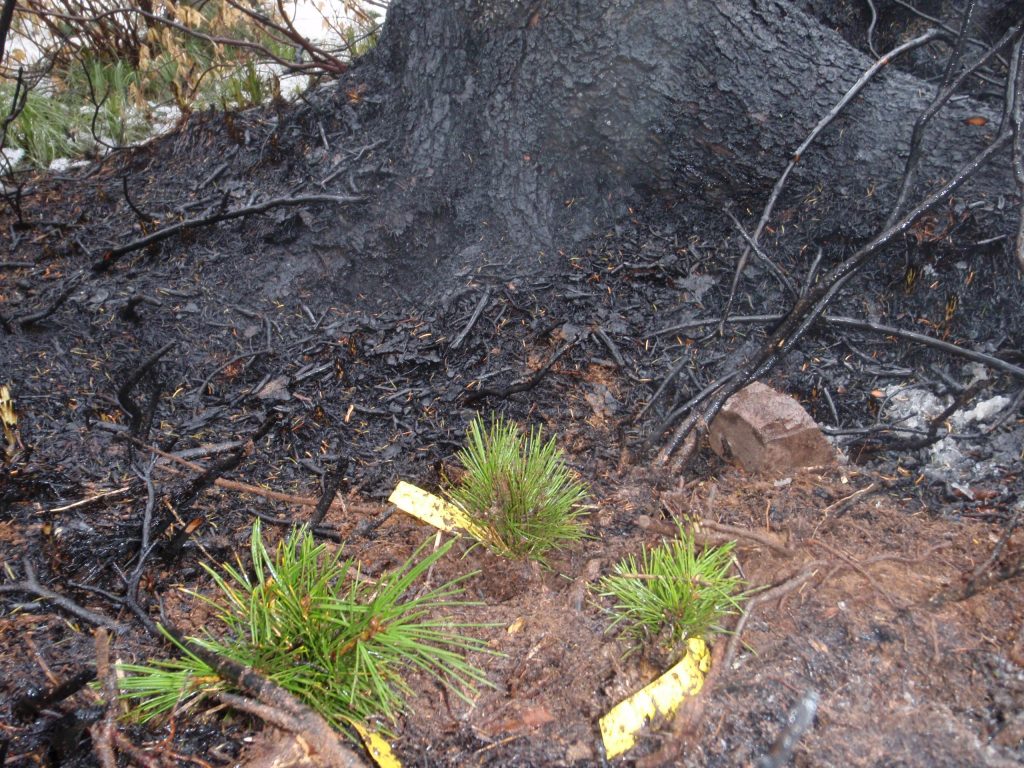
- scion (living branch tips) from resistant trees may be grafted onto the stems of established trees in a seed orchard, to produce resistant seed more quickly for restoration. Planning is underway to create two seed orchards in BC.
Species at risk status
Monitoring indicates that the populations of both species are declining rapidly as a result of the threats mentioned above. As a result, WBP was legally listed as Endangered under the Species at Risk Act (SARA) in 2012. LP was also recommended for Endangered listing by COSEWIC (Committee on the Status of Endangered Wildlife in Canada) but the species has yet to receive final listing from the Government of Canada. Both species are listed as Endangered under The Wildlife Act by the Province of Alberta in 2010, however there are no regulations under that Act to prohibit the destruction or harming of plants. In late 2021, the USFWS started the process to legally list WBP as Endangered in the USA under the Endangered Species Act (ESA).
Literature cited
Cripps, C.L., G. Alger & R. Sissons. 2018. Designer niches promote seeding survival in forest restoration: A 7-year study of whitebark pine (Pinus albicaulis) seedlings in Waterton Lakes National Park. Forests 9, 477; doi.org/10.3390/f9080477.
Hamer, D. & I. Pengelly. 2015. Whitebark Pine (Pinus albicaulis) seeds as food for bears (Ursus spp.) in Banff National Park, Alberta. Canadian Field-Naturalist 129(1):8-14.
Lanner, R.M. 1996. Made for each other: A symbiosis of birds and pines. Oxford University Press, New York, NY.
Lonergan, E.R., C.L. Cripps & C.M. Smith. 2014. Influence of site conditions, shelter objects, and ectomycorrhizal inoculation on the early survival of whitebark pine seedlings planted in Waterton Lakes National Park. Forest Science 60(3):603-612. doi.org/10.5849/forsci.13-511.
McDermind, G.J. & I.U. Smith. 2008. Mapping the distribution of whitebark pine (Pinus albicaulis) in Waterton Lakes National Park using logistic regression and classification tree analysis. Canadian Journal of Remote Sensing 34(4):356-366.
Shepherd, B., B. Jones, R. Sissons, J. Cochrane, J. Park, C.M. Smith & N. Stafl. 2018. Ten years of monitoring illustrates a cascade of effects of white pine blister rust and focuses whitebark pine restoration in the Canadian Rocky and Columbia mountains. Forests 9, 138; doi:10.3390/f9030138.
Smith, C.M. 2020. How to differentiate whitebark and limber pine in the field. Unpublished technical report. Bow Valley Naturalists, Banff, AB. 2 pp.
Smith, C.M., B. Shepherd, C. Gillies & J. Stuart-Smith. 2013a. Changes in blister rust infection and mortality in whitebark pine over time. Canadian Journal of Forest Research 43(1):90-96.
Smith, C.M., D. Langor, C. Myrholm, J. Weber, C. Gillies & J. Stuart-Smith. 2013b. Changes in blister rust infection and mortality in limber pine over time. Canadian Journal of Forest Research 43(10):919-928.
Tomback, D.F., K.G. Chipman, L.M. Resler, E.K. Smith-McKenna & C.M. Smith. 2014. Relative abundance and functional role of whitebark pine at treeline in the northern Rocky Mountains. Arctic, Antarctic and Alpine Research 46(2):407-418.
LINKS
The Whitebark Pine Ecosystem Foundation (WPEF) website (and the Canadian counterpart) has lots of resources, including archived issues of Nutcracker Notes journal.
WPEF YouTube channel with videos of bears and nutcrackers eating seeds:
https://www.youtube.com/channel/UCwLHU_e2HxnVBd__uGxoriw
Government of Alberta story map “Living on the Edge” about WBP and LP:
https://esrd.maps.arcgis.com/apps/Cascade/index.html?appid=d69f30908553449baef93beb7f7689e7
Government of Alberta Species at Risk page on WBP and LP:
Banff National Park information on WBP:
https://www.pc.gc.ca/en/pn-np/ab/banff/nature/conservation/Especes-species/pinus-albicaulis
SARA Public Registry, where you can search for documents on both WBP and LP:
https://www.canada.ca/en/environment-climate-change/services/species-risk-public-registry.html
